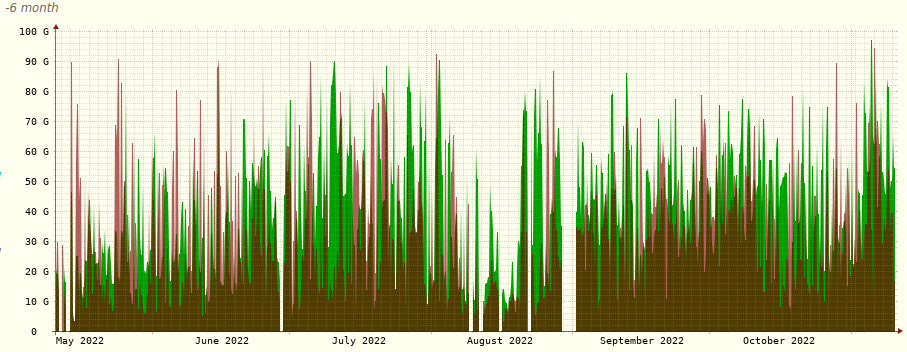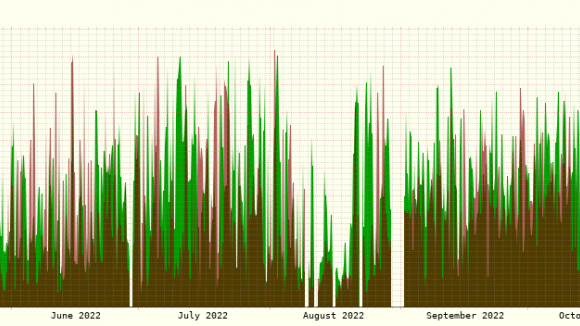Prague, November 11, 2022. The CERN International Research Laboratory has launched a new phase of data acquisition at the world’s largest accelerator, the LHC. Some of the vast amount of data produced by experiments at the LHC will continue to be processed through the CESNET optical science network during the new phase.
The experiments carried out at the LHC already deliver tens of petabytes per year. The data are processed in hundreds of computing centres distributed around the world. One of these is the CZ Tier-2 centre, located at the Institute of Physics (FZU) of the Czech Academy of Sciences.
“The centers are logically connected by software, which forms a unified WLCG (Worldwide LHC Computing Grid) grid infrastructure. Large demands for sufficient network throughput are solved by dedicated LHCOPN (LHC Optical Private Network) and LHCONE (LHC Open Network Environment) lines,” explains Jiří Chudoba, representative of the Czech Republic in WLCG.
Thanks to CESNET, the FZU centre is connected to LHCONE via a 100 Gbps link. This capacity is fully utilized, with peak traffic flows exceeding 90 Gbps. “As part of the upgrade of the CESNET3 network, a new network node, called Tier3, will be created at Na Slovance for international distribution and processing of experimental data.”, adds Tomáš Košňar, technical coordinator of the CESNET e-infrastructure.
“Part of the storage and computing capacity of the CZ Tier-2 is located at the Nuclear Research Institute in Řež and at the Faculty of Mathematics and Physics of Charles University in Prague-Troja. A fast network with a capacity of 20 Gbps and 10 Gbps, respectively, between these points is also provided by CESNET,” adds Jiří Chudoba.
In the past three years, the LHC accelerator and the large detectors have undergone upgrades and maintenance necessary to increase the energy and number of collisions. In the new data acquisition phase, which is currently planned to last with shorter breaks until 2025, the goal is to achieve twice as many recorded collisions as during the first two phases combined.
The main goal of the LHC programme – the discovery of the Higgs boson by the ATLAS and CMS experiments – has already been achieved during the first phase. This achievement was announced ten years ago at the opening of the International Conference on High Energy Physics (ICHEP) in Melbourne, the premier event in the field of high energy physics. In 2024, this conference will be held in Prague. Following the discovery of the Higgs boson in 2012, the Nobel Prize in Physics was awarded the following year to two theorists, François Englert and Peter Higgs, who had predicted the particle in the 1960s.

The volume of data transfers between FZU and LHCONE via the CESNET network
The CESNET Association was founded by various Czech universities and the Czech Academy of Sciences in 1996. Its objective is the operation and development of ICT services that comprise the national e-infrastructure for research, development and education e-INFRA CZ. Integral components of its activities include research and development in information and communications technology. CESNET is an active partner in numerous international research infrastructures, such as the Pan-European GÉANT research, development, and education network, the European Grid Infrastructure EGI.eu and the European infrastructure for open science EOSC. For more details, visit www.cesnet.cz and www.e-infra.cz.

